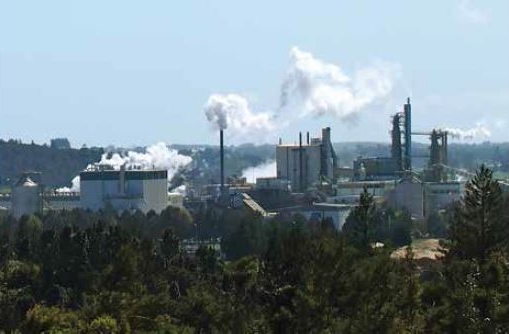Wood processors working together for energy efficiency

The most efficient use of existing wood resources in regional New Zealand is to cluster wood processors in places with significant forestry resources. There, they can use forestry residues as feedstock for other products or for heat in wood processors or other industries.
According to a recently completed Scion project, this strategy called industrial symbiosis will create jobs, increase GDP and reduce greenhouse gas emissions.
Industrial symbiosis is a local collaboration where different industries provide, share and reuse materials, energy, water, and/or by-products to create shared value. Resources are used more efficiently by the group than by any individual organisation.
Scion’s Wood Energy Industrial Symbiosis project has mapped New Zealand’s varying forestry, energy resources and fossil energy-using industries to identify regions where industrial symbiosis clusters of wood processing operations could be co-located with meat and dairy processing, for example.
Regional opportunities
Gisborne, Hawkes Bay, Northland and Southland/Clutha are all forecast to have a long-term supply of surplus logs, forestry and other woody waste. Each region has different energy resources, large wood processing and other manufacturing plants. These affect future wood processing options and opportunities to co-locate with other industries.
New opportunities for wood processing clusters in these regions were identified using the WoodScape model and predictions of future log availability to calculate return on capital investment (ROCE).
Results showed that industrial symbiosis in Gisborne would be focused on standalone wood-processing powered by forestry and processing residues. In Ngawha, in Northland, the availability of geothermal energy frees up residues for secondary manufacturing. In Hawkes Bay and Southland, residues from wood processing clusters would be used to replace coal or LPG energy sources used by other nearby industries.
The new wood processes with the highest ROCE’s include sawmills, Optimised Engineering Lumber (OEL™), plywood, oriented strand board, cross-laminated timber and remanufactured timber. Where geothermal heat is available the range of options expands and includes bio-chemical recovery and manufacture of solid biofuels from wood processing residues that might otherwise have been used to provide process or drying heat.
Win-win-win
If each of these clusters were established, the increase in onshore processing would provide an additional ~1000 jobs in each region, add a total of $2 billion to New Zealand’s bottom line and reduce emissions of carbon dioxide by 67,000 tonnes a year by replacing coal with biomass.
Growing on-shore processing will be necessary if New Zealand wants to achieve a 10-fold increase in GDP from forests and related manufacturing. Co-locating wood processing to take advantage of and share resources makes economic and environmental sense. New wood processing clusters would create jobs and wealth in the regions and increase people’s overall quality of life.
Other opportunities
An existing example of industrial symbiosis is the town of Kawerau in the eastern Bay of Plenty. Surrounded by forestry, Kawerau is a well-established wood-processing centre, and has the world’s largest application of geothermal energy for industrial use. Analysis has shown that further development in Kawerau, such as a new plywood mill and an OEL™ plant with the residues being used for chemical production and fuel for industrial heat, could have a significant positive impact on GDP and jobs.
Opportunities for full industrial symbiosis around the Marsden Point oil refinery and Golden Bay Cement/Portland Cement in Northland hold similar potential.
There are also opportunities to replace fossil fuels used for industrial heat with biomass in the central North Island, Blenheim, Tasman/Nelson, Hokitika, Greymouth and Canterbury.
